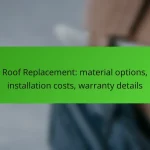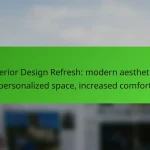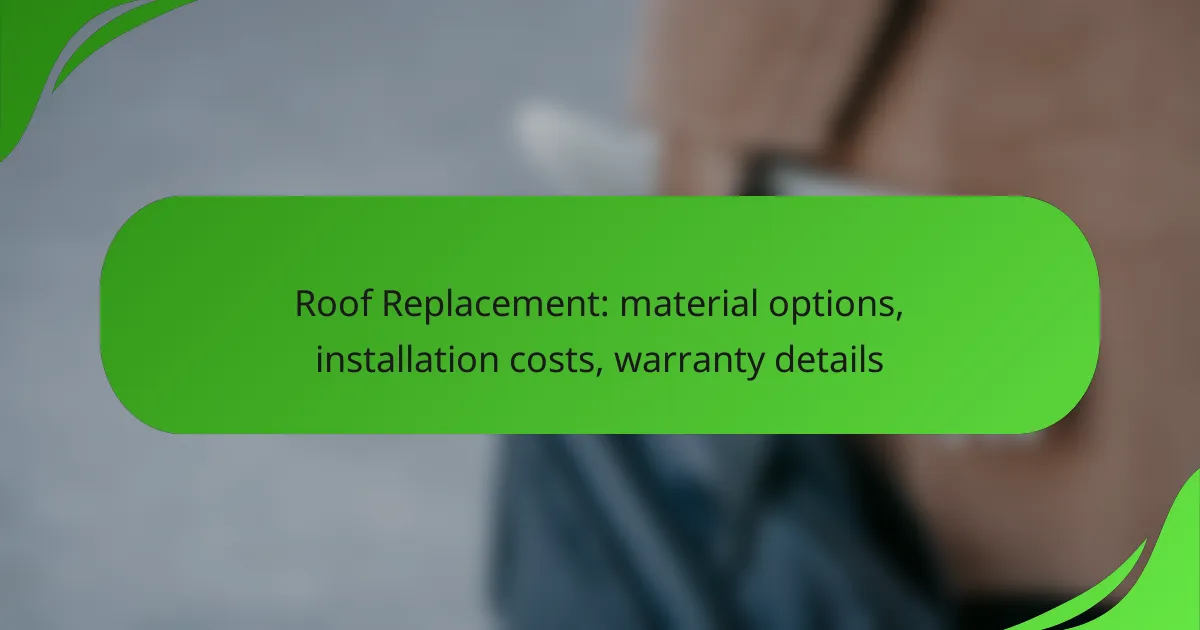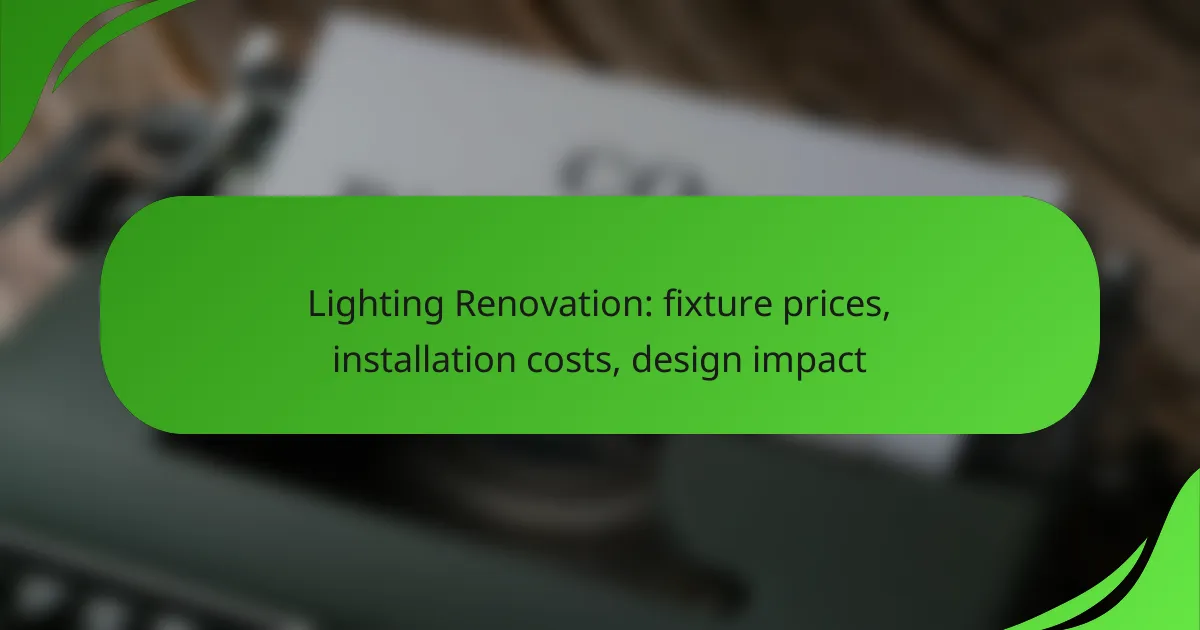Siding replacement is a crucial home improvement project that enhances both the appearance and durability of your property. With various material options such as vinyl, wood, and fiber cement, homeowners can choose based on their budget and aesthetic preferences. The cost of replacement can range significantly, influenced by material selection and installation factors. Understanding the installation process is essential for achieving a successful and lasting result.

What are the best siding materials for replacement?
The best siding materials for replacement depend on factors like durability, cost, and aesthetic appeal. Common options include vinyl, wood, fiber cement, metal, and stucco, each offering unique benefits and considerations for homeowners.
Vinyl siding benefits
Vinyl siding is popular due to its affordability and low maintenance requirements. It typically costs between $2 to $7 per square foot and is available in various colors and styles, allowing for customization.
This material is resistant to rot and pests, making it a durable choice for many climates. However, it can fade over time and may not withstand extreme temperatures as well as other materials.
Wood siding advantages
Wood siding provides a classic and natural look, enhancing the aesthetic appeal of homes. It generally ranges from $3 to $10 per square foot, depending on the type of wood used.
While wood can be treated for weather resistance, it requires regular maintenance, such as painting or staining, to prevent rot and insect damage. This makes it a less practical option for some homeowners.
Fiber cement siding features
Fiber cement siding combines cement, sand, and cellulose fibers, resulting in a highly durable material that mimics the appearance of wood or stucco. Its cost typically falls between $5 to $10 per square foot.
This siding is resistant to fire, insects, and rot, making it a long-lasting choice. However, installation can be more labor-intensive, which may increase overall costs.
Metal siding options
Metal siding, often made from aluminum or steel, is known for its strength and longevity. Prices usually range from $3 to $8 per square foot, depending on the material and finish.
It is resistant to pests and fire, but can be prone to dents and scratches. Metal siding also requires proper insulation to prevent heat loss, which can add to installation costs.
Stucco siding characteristics
Stucco siding is a cement-based material that provides a unique texture and appearance. It typically costs between $6 to $9 per square foot and is popular in warmer climates due to its energy efficiency.
While stucco is durable and low-maintenance, it can crack in extreme weather conditions. Proper installation and sealing are crucial to prevent moisture issues, making professional installation highly recommended.
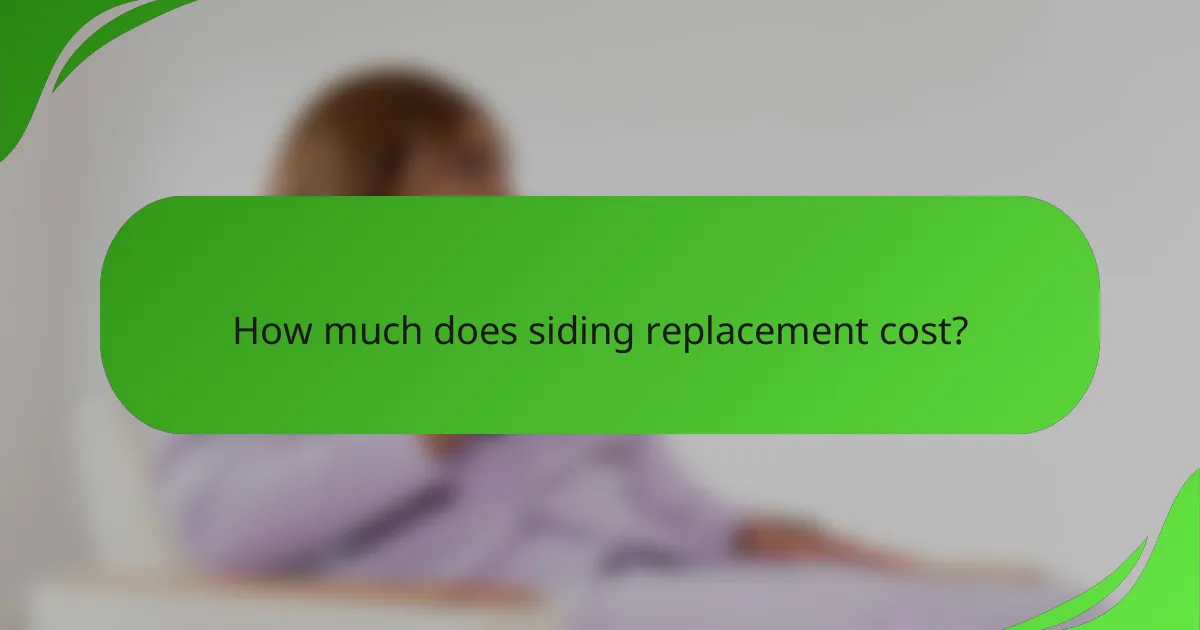
How much does siding replacement cost?
The cost of siding replacement varies widely based on material choice, labor, and regional factors. Homeowners can expect to spend anywhere from a few thousand to over ten thousand dollars, depending on the size of the house and the type of siding selected.
Average cost of vinyl siding
Vinyl siding is one of the most popular options due to its affordability and low maintenance. The average cost typically ranges from $2 to $7 per square foot, including installation. For a standard home, total costs can fall between $6,000 and $12,000.
Vinyl siding is available in various colors and styles, which can influence the overall price. Higher-end options with enhanced durability or unique textures may push costs toward the upper end of the range.
Wood siding cost estimates
Wood siding offers a classic aesthetic but comes with higher maintenance needs. Costs generally range from $3 to $10 per square foot, leading to total expenses between $8,000 and $15,000 for an average-sized home.
Factors such as wood type—cedar, pine, or redwood—can significantly affect pricing. Additionally, treatments for weather resistance may add to the overall cost.
Fiber cement pricing
Fiber cement siding is known for its durability and resistance to pests and fire. The average cost is about $5 to $10 per square foot, resulting in total installation costs of approximately $10,000 to $15,000 for a typical home.
This material mimics the look of wood or stucco, providing versatility in design. While it may have a higher upfront cost, its longevity can make it a cost-effective choice over time.
Metal siding expenses
Metal siding, often made from aluminum or steel, is durable and low-maintenance. Costs usually range from $7 to $12 per square foot, leading to total expenses of around $10,000 to $20,000 for an average-sized home.
Metal siding can be susceptible to dents and scratches, so considering the environment and potential weather impacts is essential when selecting this material.
Factors influencing siding costs
Several factors can influence the overall cost of siding replacement, including material choice, labor rates, and the complexity of the installation. Regional differences in labor costs can also play a significant role.
Additional considerations include the condition of the existing siding, any necessary repairs, and the choice of insulation, which can affect energy efficiency and long-term savings. Homeowners should obtain multiple quotes to ensure competitive pricing and evaluate the total cost of ownership for each siding type.

What is the installation process for siding replacement?
The installation process for siding replacement involves several key steps, from preparation to final inspection. Proper planning and execution can ensure a durable and aesthetically pleasing result.
Preparation steps for installation
Before starting the siding replacement, assess the existing siding for damage and remove any obstacles, such as fixtures or landscaping. Ensure the underlying structure is sound, making necessary repairs to the sheathing or framing.
Gather all required materials and tools, and check local building codes for any specific regulations regarding siding installation. This preparation phase is crucial for a smooth installation process.
Installation timeline overview
The timeline for siding installation can vary based on the size of the home and the type of siding chosen. Generally, the entire process can take anywhere from a few days to a couple of weeks.
Factors affecting the timeline include weather conditions, the complexity of the installation, and the experience level of the installers. Planning for potential delays is advisable to avoid frustration.
Tools required for siding installation
Essential tools for siding installation include a circular saw, level, measuring tape, and nail gun. Additionally, safety gear such as gloves and goggles is important to protect against hazards during installation.
Having the right tools on hand can significantly speed up the process and improve the quality of the installation. Consider renting specialized equipment if needed to save costs.
Common installation mistakes
One common mistake during siding installation is improper sealing, which can lead to moisture issues. Ensure all seams and joints are adequately sealed to prevent water infiltration.
Another frequent error is misalignment of the siding panels, which can affect both aesthetics and performance. Regularly check for level and plumb throughout the installation to maintain consistency.
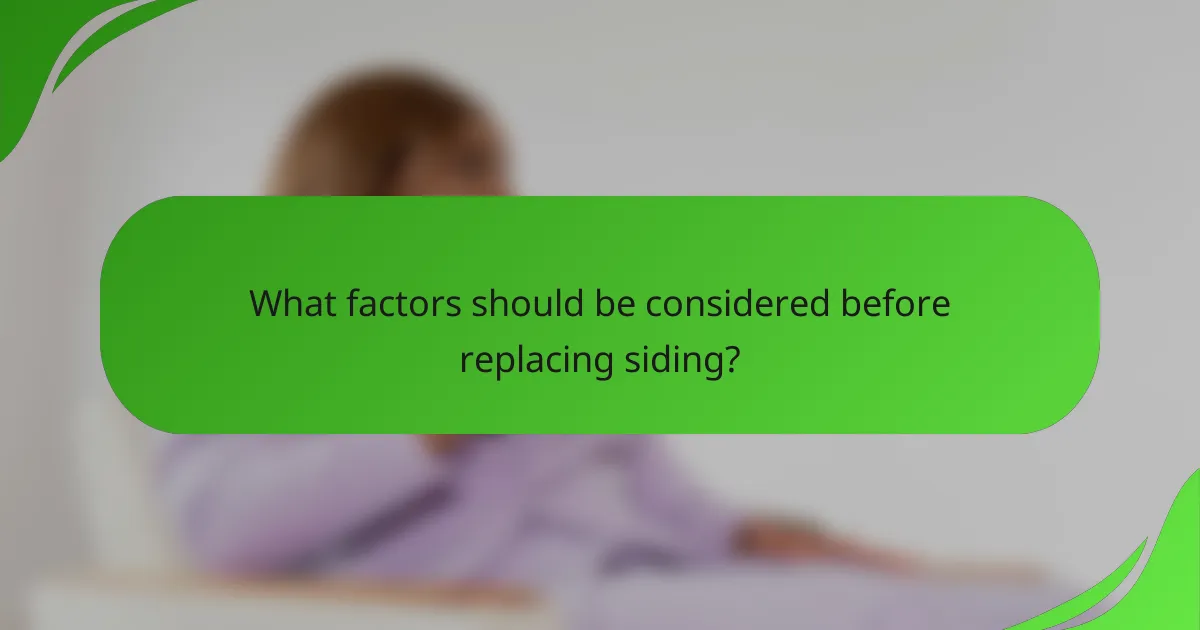
What factors should be considered before replacing siding?
Before replacing siding, consider factors such as material durability, climate conditions, aesthetic preferences, and budget. Each of these elements plays a crucial role in determining the best siding option for your home.
Climate impact on siding choice
Climate significantly affects the choice of siding materials. For instance, homes in areas with heavy rainfall may benefit from materials like fiber cement or vinyl, which resist moisture better than wood. Conversely, in regions with extreme heat, reflective materials can help keep homes cooler.
When selecting siding, consider the local weather patterns. For example, if you live in a place with high humidity or frequent storms, prioritize materials that offer superior water resistance and wind resistance. This can prevent costly repairs in the long run.
Additionally, consider insulation properties. In colder climates, insulated siding can improve energy efficiency, potentially lowering heating costs. Always evaluate how different materials perform in your specific climate to ensure longevity and effectiveness.
